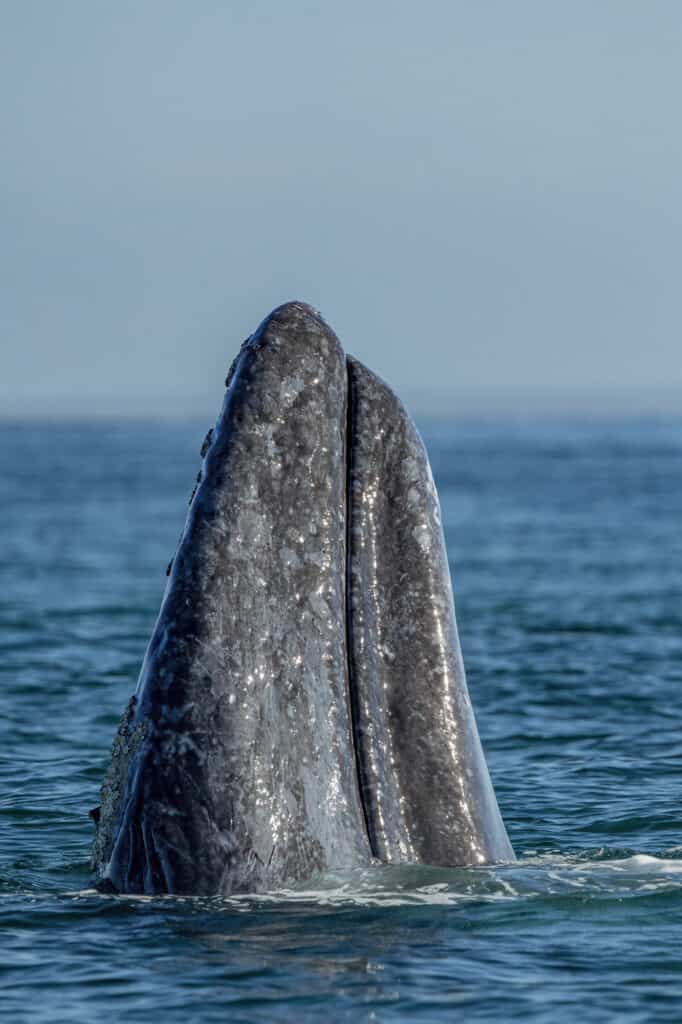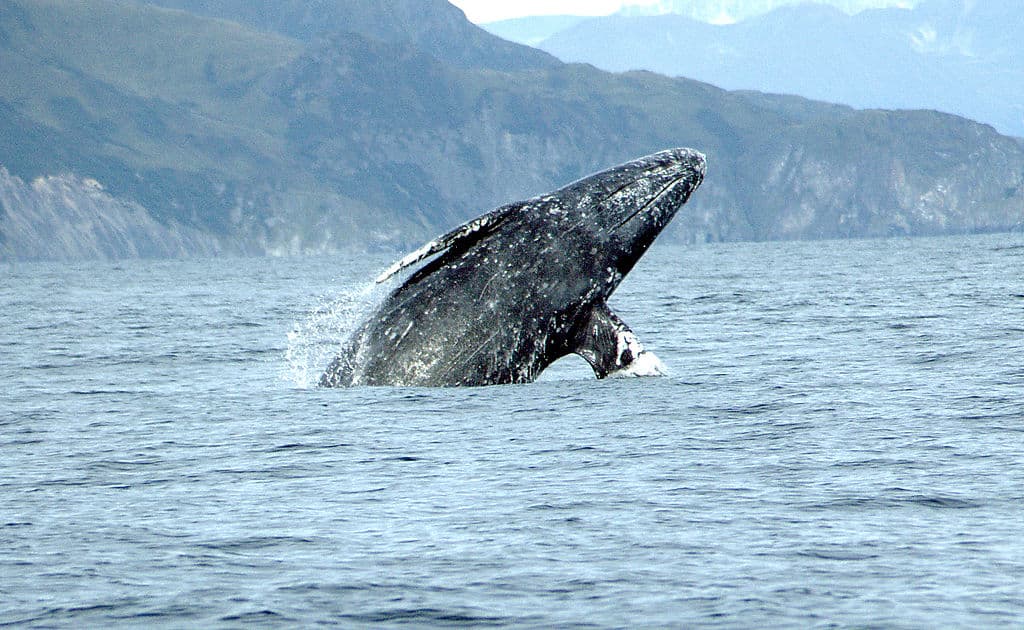A gray whale, thought to have been extinct in the Atlantic Ocean for over 200 years, has been observed off the coast of Nantucket, Massachusetts. Several news outlets have reported this incredibly rare event. Each has emphasized the role of climate change on marine life.
Gray whales (Eschrichtius robustus)

Gray whales can be found in the Pacific Ocean. Their distribution and movements separate the Eastern North Pacific population and the critically endangered Western North Pacific population.
The Eastern North Pacific population has remarkably recovered since the whaling era. However, the species faces ongoing threats from habitat degradation, entanglement in fishing gear, and climate change.
Gray Whale Sighting in the Atlantic
Researchers from the New England Aquarium have observed a gray whale off the coast of Nantucket, Massachusetts. This documented sighting has excited scientists and wildlife enthusiasts worldwide since gray whales from the Atlantic Ocean have been thought to be extinct for 200 years!
According to the aquarium researchers, gray whales have been observed in the Atlantic and Mediterranean waters only five times in the past 15 years.
A Case of Global Warming and Conservation Efforts

The whaling era drove gray whale populations to near extinction. However, strict conservation measures have allowed the population to recover, with 19,000 animals in the eastern Pacific alone. An increase in population sizes could lead to several ecological and behavioral changes within the population, including the expansion of the geographical range.
Changes in a whale’s geographical range are often driven by resource competition and territorial pressure. However, scientists suggest that climate change might significantly influence whale migration patterns. In this case, the reduction of sea ice in the Northwest Passage due to global warming might have facilitated this whale’s unique migration patterns.
Conclusion
In the face of a rapidly changing environment, we witness interesting shifts in animal migration patterns. Seemingly positive, whales may find new regions accessible as sea ice diminishes. However, sea ice is critical to some animals for hunting and breeding. One thing is certain: the effects of climate change are evident.
These observations, although seemingly positive, underscore the need for sustained efforts to mitigate climate change.
You might also enjoy:
- Man Knocked Off Sailboard By Whale
- Meet the Largest Blue Whale In The World (110ft)
- Whale Watchers Encounter 100-Ft-Long Blue Whale
Join our Forum for free today!

- Watch: Anaconda VS Caiman Intense Encounter - July 26, 2024
- Watch: A Baby Elephant Play with Birds - July 26, 2024
- The Micro-Threat With Major Consequences For Galápagos Penguins - July 25, 2024

